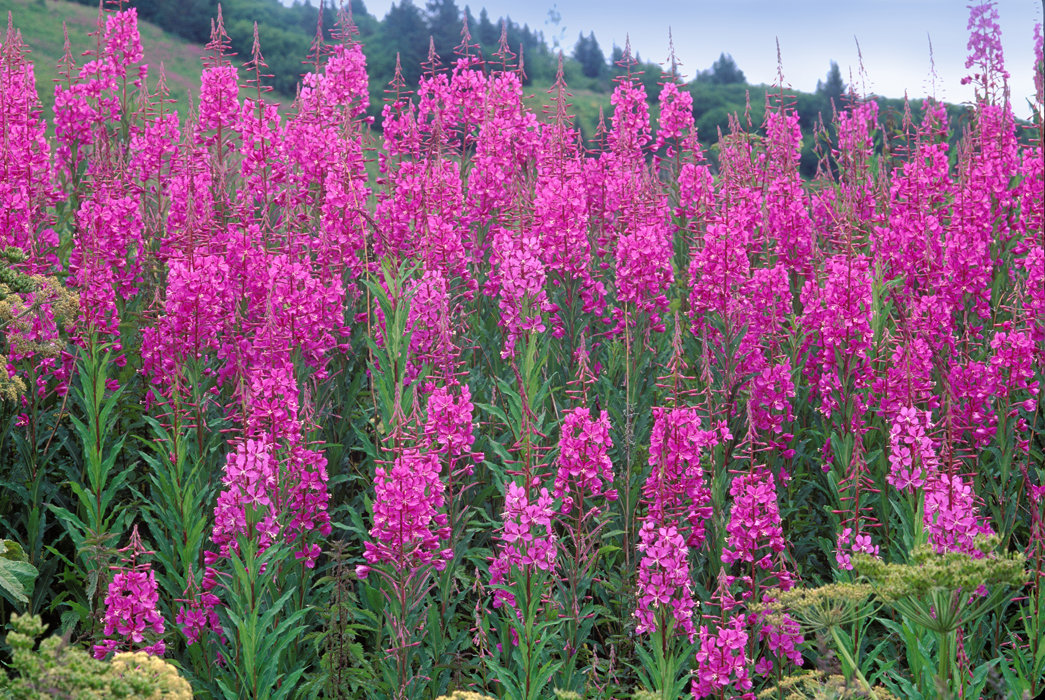
It has been a great year for flowers in Yellowstone. There was enough winter and spring snow and summer thunderstorms to make for a beautiful collection of flowers, but they are winding down now. But it isn’t over yet! Some of the recent bloomers are Indian paintbrush, dalmatian toadflax, Lewis monkeyflower, and fireweed.

There are many species of Indian paintbrush. In Yellowstone, as in many other places, they range in color from pale yellow to orange to a deep fuchsia. They are in many areas of the park but I really like the deep red and fuchsia colored ones on Mount Washburn (much deeper colored than the ones shown above) where they are blooming right now. Indian paintbrushes are unusual because they are partially parasitic on the plants surrounding them. They have some green leaves but if you look closely you will see some of their leaf tips are the same color as the flowers. They carry on photosynthesis but not as effectively as most plants. The brightly colored leaves help them attract pollinators. But they don’t “pay” for that extra ability to attract pollinators, their neighbors do.

I am not supposed to like Dalmatian toadflax, but I do. It is a plant that was introduced into the United States over 100 years ago from the Mediterranean as a fabric dye, for medicinal purposes and as an ornamental. It is invasive and crowds out native plants. I love native plants so it is wrong for me to like it. Every year I watch the Park Service employees killing it and every year it comes back. I guess I like it because I think it’s pretty and I applaud its ability to survive the years of herbicide. It is most common in the northern part of the park on dry slopes.

Lewis monkeyflower has a smaller distribution in Yellowstone than any of the other plants discussed here. Its color is unmistakable and makes it hard to miss. Look for it this time of year near Dunraven Pass. It gets its name from the face like appearance of its flowers, but I think there are flowers that look more like a face than monkeyflowers. It was one of the many plants collected by the Lewis and Clark Expedition and was named in honor of Meriwether Lewis.

Fireweed is probably the most appropriately named plant here because it is one of the first plants to pop up after a fire. New plants in a recently burned area are called “pioneer” species. Fireweed does do well after a fire but it can be found in many places in the park, especially along roadsides as it does well in disturbed areas. I think it is a beautiful plant but I used to dread seeing it bloom. I knew that meant we would soon have to go back home to hot Texas to start a new semester of teaching. Now I love to see it bloom because I don’t have to go home to Texas until I feel like it. Now when I see it blooming I realize the number of tourists will go down soon, so I really look forward to seeing it.






I forgot to tell you how much I love these flower shots…the colors are much more vibrant than the fireweed in the PNW.
That’s as bad as enjoying fog or marine layer-less days, knowing the dryer air means the tourists will be leaving the beach soon…going home to the cities. You know it’s bad to be wishing your life away!
Beautiful!!!
That fireweed is incredible!